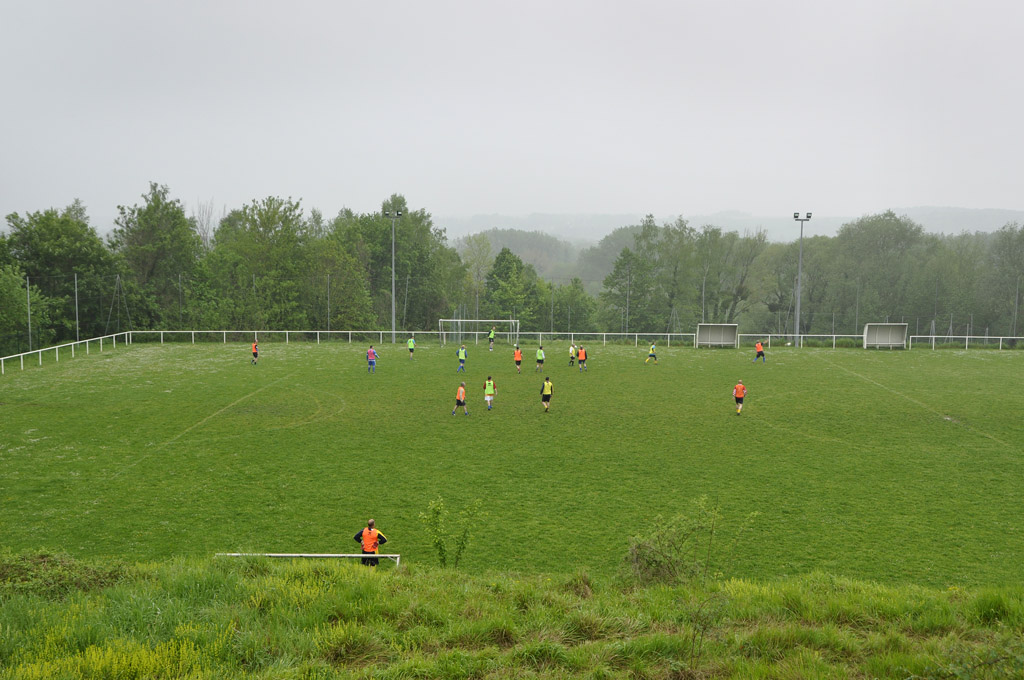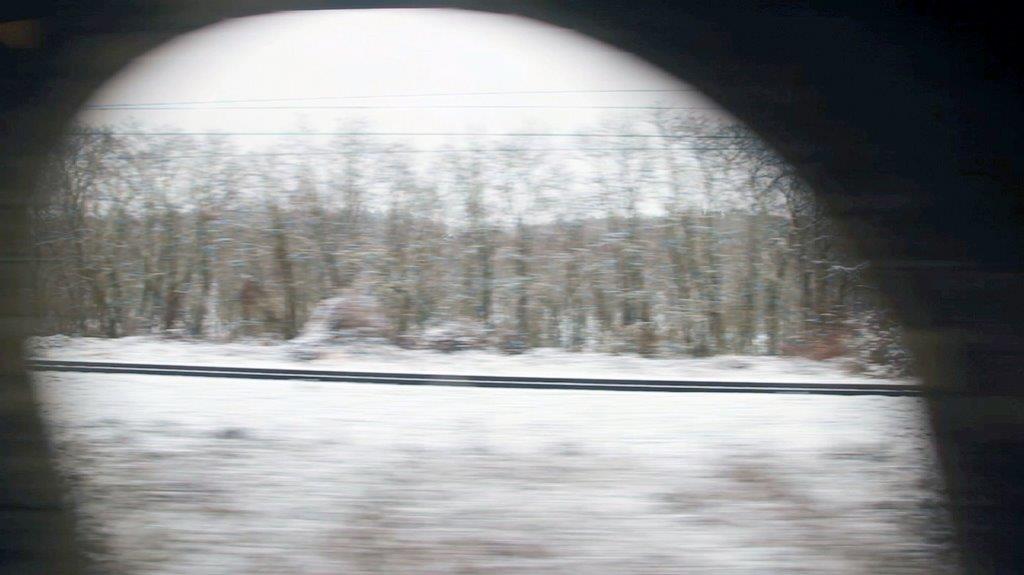LOVE
RÉSIDENCES |
Au fil des saisons et des démarches invitées, une mémoire sensible documente un territoire et le quotidien de ses habitants. |
Bertrand STOFLETH - Andrea EICHENBERGER - Cindy LELU - Julie MEYER - Susan TRANGMAR - Guillaume HERBAUT
|
|
Bertrand STOFLETH
Aeropolis
8 October -31 December 2016
LE QUADRILATÈRE
22 rue Saint-Pierre à BEAUVAIS - Phone : (0)3 44 15 67 00 (week) / (0)3 44 15 30 30 (week-end)
from Tuesday to Friday, 12am-6pm - Saturday and Sunday, 10am-6pm
Opening on Saturday 8 October at 2.30 pm
Closed on 25 December
 In "Aeropolis", the subject in question is the conquest of the air. More precisely, it concerns the part of dream that this gives rise to among men. This work seeks to show its mythic dimension in its most contemporary expression through current developments in aviation and its practices. In "Aeropolis", the subject in question is the conquest of the air. More precisely, it concerns the part of dream that this gives rise to among men. This work seeks to show its mythic dimension in its most contemporary expression through current developments in aviation and its practices.
Documentary photographer Bertrand Stofleth evokes the repercussions and impact of these breakthroughs on both the imaginary as well as the topographical level. He reinvents an iconography, between myth (the pioneers, the adventure of airmail, aerial combat, etc.) and reality. In this way, he leads us through these current habits made up of legacy and revolutions brought about through the “lowcostisation” of aerial transport.
“Aeropolis”, a city of aviation, finally draws up an inventory of inhabited places, caught in this gap between historicity, contemporary changes and ever-present fascination.
Setting off from the area of Beauvais, whose aerodrome has over the years become the “Parisian airport” of Ryanair, we are taken back along the legible traces of numerous earlier stories, so as to discover those imaginary aspects that are still current in aviation today.
Born in 1978, Bertrand Stofleth lives and works in Lyon. He graduated from ENSP school of photography in Arles in 2002.
www.bertrandstofleth.com
Bertrand Stofleth was invited to Beauvais in the framework of a residency set up by Diaphane in 2014-2015.
|
8 October-19 November 2016
L’ÉCUME DU JOUR - 5 rue du Faubourg Saint-Jacques at BEAUVAIS
Phone : +33 (0)3 44 02 07 37
from Tuesday to Saturday from midday
Tuesday, Wednesday and Thursday : closing at 8 pm - Friday : closing at 9.30 pm - Saturday: closing at 6 pm
Opening on Saturday 8 October at 6.30 pm
Andrea EICHENBERGER
Les mille briques

"I like meetings and the exchanges that come from them. That is what prompted psychologist Isabelle Marseille to invite me to join her on this memory-making project in Beauvais remand centre. The closure of this place of detention, which ceased operating in December 2015, was to lead to the disappearance of minor, everyday little stories telling of prison life and different ways of dealing with it. Isabelle had heard such stories throughout the twelve years she worked in the remand centre.
Wishing to bring these stories out of anonymity and the homogenising block that prison represents, and seeking to give some chance to what is invisible and may become even more so with the disappearance of prisons within French towns, Isabelle Marseille wanted to combine photographs and words to give an image of these and to tell how people face up to this place, invent themselves in it, and try to find ways of making it bearable. So it was that I came to find myself in the ‘thousand bricks’ (as the detainees call it), where I was able to meet many people who were to enable me not only to build a visual memory, but also to raise questions, by means of photography, on prison conditions in France and on the difficulties we have in looking at each other”.
Andrea Eichenberger was born in Florianopolis (Brazil) in 1976. Having graduated in visual arts in Brazil, she studied photography and obtained a PhD in anthropology in France. She lives and works between her home town and Paris.
www.andreaeichenberger.com
To help to the book project :
http://www.diaphane.org/telechargement/souscription_1000briques.pdf
This résidency was supported by Diaphane
|
1st October - 13 November 2016
ESPACE SERAPHINE LOUIS
11 rue du Donjon à CLERMONT-DE-L'OISE - Phone : +33(0)3 44 78 88 69
Open Wednesday, Saturday and Sunday, from 2 to 6 pm
Opening on Friday 7 October at 6.30 pm
Cindy LELU
90 minutes

"The image of football is one of memory, a victory, a defeat, a badly placed tackle, square posts, a soaking wet leather ball that is impossible to lift, the jersey donned in the locker room, the sound of studs on the floor of the corridor leading onto the pitch, the coach hollering from beside the bench, a young girl in the stands, the after-match ham sandwich and bag of crisps bought at the snack bar.
The image of football is one from the archives, the archives of those memories, arranged in albums covering the progression from beginners to veterans by way of the under-eighteens, time-faded pages in the clubhouse, where the club’s moments of glory are proudly displayed.
The image of football is one from the local paper, spread open on a Sunday morning, where the whole choreography of bodies in extension is played out, and where words and worse are played on in the text.
The image of football is one from the screen, the big cup championships, a stadium by day or at night under spotlights, rousing chants of supporters, tifos displayed among scarves under the clouds from smoke bombs, trendy haircuts, fluorescent trainers, sweat in close-up, the star system, red cars with shiny leather seats.
The image of football is one from the imagination, made up of all these images, and it is in going through them, and in bringing them all together at the same time that we find the multiplicity of views that we have on this sport."
Cindy Lelu was born in 1985. She lives and works in Pas-de-Calais, near the Félix Bollaert stadium. She graduated from ENSP school of photography in Arles in 2011.
www.cindylelu.com
Cindy Lelu was invited to Pays du Clermontois in the framework of a residency set up by Diaphane as part of the project 'La 'photo bat la campagne' |
|
1st October - 13 November 2016
ESPACE SERAPHINE LOUIS
11 rue du Donjon à CLERMONT-DE-L'OISE - Phone : +33(0)3 44 78 88 69
Open Wednesday, Saturday and Sunday, from 2 to 6 pm
Opening on Friday 7 October at 6.30 pm
Julie MEYER
Roman de gare
 "Roman de gare” (Airport Novel) was created during an artistic residency set up by Diaphane. The work comprises a series of photographs and a video with sound showing the railway line connecting Clermont-de-l’Oise and Paris. "Roman de gare” (Airport Novel) was created during an artistic residency set up by Diaphane. The work comprises a series of photographs and a video with sound showing the railway line connecting Clermont-de-l’Oise and Paris.
The video takes us on a singular visual and audio trip. The sound track, composed of passengers’ observations, is set in relation to a fleeting landscape. The travellers’ words evoke the everyday life of each of them and the ways they come up with to pass the time of the trip. A train driver analyses the modifications of routes, the closure of factories and deindustrialisation of the area around Creil. The itinerary is put into movement by the voices of the personal trajectories.
As the film progresses, the route is discovered from various points of view and at different seasons. Through the travellers’ speech, the film tends to draw up the portrait of a territory that is not one: that of a line passing through rural, industrial, and urban fringe areas to end its route among the tower blocks in the north of Paris.
A series of photographs is presented alongside the video. This shows what lies behind the scenes. As a sort of countershot to the view from the railway carriage, the images convey a still and silent countryside in opposition to the speed of the train.
Julie Meyer was born in Strasbourg in 1982. In 2007, she graduated in fine arts from the school of decorative arts in Strasbourg.
www.julie-meyer.com
Julie Meyer was invited to Pays du Clermontois in the framework of a residency set up by Diaphane as part of the project 'La 'photo bat la campagne'.
|
LE QUADRILATÈRE - Auditorium
22 rue Saint-Pierre à BEAUVAIS
Projection le dimanche 9 octobre 2016
FACULTÉ DES ARTS
30 rue des Teinturiers à AMIENS
Projection, date à déterminer
Susan TRANGMAR
UNFOUND film - 23mn 42s
 One starts by identifying a place on a map. Then, by driving or walking, a place is arrived at. A first visit takes place with the arrival of Spring, fertile and green. The cemeteries themselves, appearing so arbitrarily dotted within the landscape, are shocking either in their intimate serenity or their exposed, stark brutality. ROSSIGNOL WOOD. SUNKEN ROAD. Entering each enclosure, there is always a sense of crossing a boundary. The efflorescence of nature creeps up to the external perimeter, ready to reclaim the ground. GUARDS. QUEENS. GUNNERS. One walks up and down the lines inspecting each headstone, feeling the imperative to take note of every single name, every inscription, every memorial, even though this is impossible. The more names are read, the less the imagination is able to make sense of the scale of destruction they represent. Names pile up as a monstrous accumulation of wasted potential. BITTER. For some, the need to forget is the only kind way to carry on. For others, to return is a compulsion and there is no rest until the individual trauma is beyond living memory. Writing is always at hand to attempt an explanation and an opportunity to TRANSLATE and re-iterate. One starts by identifying a place on a map. Then, by driving or walking, a place is arrived at. A first visit takes place with the arrival of Spring, fertile and green. The cemeteries themselves, appearing so arbitrarily dotted within the landscape, are shocking either in their intimate serenity or their exposed, stark brutality. ROSSIGNOL WOOD. SUNKEN ROAD. Entering each enclosure, there is always a sense of crossing a boundary. The efflorescence of nature creeps up to the external perimeter, ready to reclaim the ground. GUARDS. QUEENS. GUNNERS. One walks up and down the lines inspecting each headstone, feeling the imperative to take note of every single name, every inscription, every memorial, even though this is impossible. The more names are read, the less the imagination is able to make sense of the scale of destruction they represent. Names pile up as a monstrous accumulation of wasted potential. BITTER. For some, the need to forget is the only kind way to carry on. For others, to return is a compulsion and there is no rest until the individual trauma is beyond living memory. Writing is always at hand to attempt an explanation and an opportunity to TRANSLATE and re-iterate.
Susan Trangmar was born in Brighton. She has worked for many years with the photographic image in a variety of media: still photography, projection installation, moving image and sound. She currently lives and works in London, where she is Reader in Fine Art at Central Saint Martins UAL.
UNFOUND has been published as a DVD booklet by Diaphane éditions.
www.susantrangmar.com
UNFOUND was made during an artist residency hosted by Diaphane which took place in the
department of the Somme, Picardy, France 2015–16.
The film marks the centenary of the first Battle of the Somme, 1 July – 13 November 1916.

|
19 0ctober - 19 November 2016
ARTOTHÈQUE DE L'AISNE / MEDIATHÈQUE DE TERGNIER
Place Lionel Lefèvre à TERGNIER - Phone : +33(0)3 23 67 56 46
Tuesday, Wednesday, Friday : 9.30 am to midday and 2 to 6 pm,
Thursday: 2 to 6 pm
Saturday : 9.30 am to midday ant 2 to 5 pm
Opening : Wednesday 19 October at 6 pm
Guillaume HERBAUT
Tergnier, la cité modèle
 Tergnier: the town of railway workers. After the First World War, Raoul Dautry, an engineer with the Northern Railway Company, built a housing estate for the company’s workers. This estate was to be emblematic, a model for living as well as for architecture. The housing was allocated according to family size, not to hierarchical rank. Every detached home had a garden. “Anything that might recall the old worker’s cottage was abolished”. All the infrastructures were designed to create a group spirit turned towards the company. The lay-out of this garden city was inspired by the shape of locomotive wheels. Tergnier: the town of railway workers. After the First World War, Raoul Dautry, an engineer with the Northern Railway Company, built a housing estate for the company’s workers. This estate was to be emblematic, a model for living as well as for architecture. The housing was allocated according to family size, not to hierarchical rank. Every detached home had a garden. “Anything that might recall the old worker’s cottage was abolished”. All the infrastructures were designed to create a group spirit turned towards the company. The lay-out of this garden city was inspired by the shape of locomotive wheels.
Tergnier was a symbol of the ideal society of railway workers. Life took its pace from the sound of trains arriving at the depot or sorting centre, and by the ringing that indicated the start or end of the working shift.
After 1945, the estate, two-thirds of which had been destroyed by American bombing, was rebuilt differently. The spirit of the times had changed. Detached housing was abandoned, to be replaced by small shared buildings influenced by the architecture of Le Corbusier.
Tergnier now has 15,000 inhabitants. The town has been hit head on by the financial crisis. The SNCF workshops that used to employ 4,000 railway workers now have no more than 600, and surrounding companies have gradually closed down. The estate is no longer inhabited by SNCF employees alone. However, the railway worker spirit, that of solidarity and mutual aid, continues to resist the general gloom.
Guillaume Herbaut, photojournalist, was born in Paris in 1970. In his documentary work, which has won several awards, he focuses on places that are charged with history, while investigating their symbols and memory.
www.guillaume-herbaut.com
Guillaume Herbaut was invited to the town of Tergnier in 2015 in the framework of a residency set up by Diaphane. |








